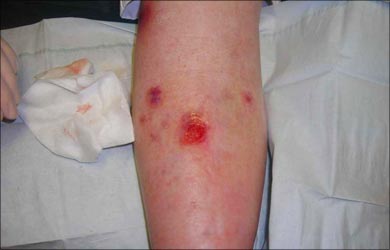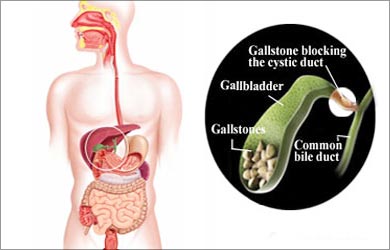Treatment of Sickle Cell Anemia
The treatment of sickle cell anemia depends on the symptoms in the affected individual.
It is not possible to cure sickle cell anemia as it is a genetic disease. Hence, treatment is almost always focused on managing the disease symptoms and preventing sickle cell crisis.
Management of individual symptoms includes-
- Fatigue and Anemia- Fatigue is very commonly associated with anemia. In a sickle cell anemia patient, the RBCs are very brittle and this results in a severe drop in blood cells. Hb levels in individuals with sickle cell anemia are usually between 6 to 8gms/dl (normal value is between11-13gms/dl). A blood transfusion may be required to compensate the loss in severe cases. Folic acid supplementation is given.

- Pain Crises- Excruciating pain occurs due to impaired blood circulation in sickle cell anemia patients. This usually requires hospitalization and medications for pain relief. An increased fluid intake is also recommended. Dehydration must be prevented to avoid further injury to the tissues. Transfusion of intravenous fluids may be required.
Hydroxyurea is now a popular medication to tackle pain and to increase the amount of fetal HB, which is resistant to sickling. Hydroxyurea reduces the frequency of severe pain, acute chest syndrome and the need for blood transfusions. This medication has a few side effects, such as increasing risk for infections.
Other medications for pain relief include acetaminophen, Nonsteroidal Anti-Inflammatory Drugs(NSAIDs), or narcotics like meperidine, morphine and oxycodone.
Other methods to tackle pain include self-hypnosis, bio feedback and electrical nerve stimulation (ENS).
- Dactylitis and arthritis- This can be relieved by administering anti-inflammation medications, such as ibuprofen and aspirin.
- Bacterial infection can be treated with antibiotics. Hospitalization may also be required.

- Splenic sequestration- Transfusion of blood may be required. Sometimes, surgical removal of the spleen may be imperative.
- Lung and heart injury-This problem is usually treated depending on the type and degree of damage. This may include oxygen supplementation, medications, blood transfusion or treatment with antibiotics.
- Leg ulcers in sickle cell anemia patients can be managed by medications, dressings, elevation of the leg, topical therapies and sometimes skin grafting.

- Aseptic necrosis or bone infarcts- Rest and pain-managing medications are necessary to manage this condition. In some cases, joint replacement is necessary.
- Priapism- This condition in male patients can be treated with fluids, medication, aspiration of blood from the penis or with surgery.
- Eye damage- If bleeding into the eye or retinal detachment is detected early, appropriate measures such as laser therapy can be carried out to prevent blindness.
- Gall stones- If gall stones result in gall bladder disease, then surgery is required to remove the affected bladder.

- Bone marrow transplants- In a small number of very young patients, with severe form of the disease, bone marrow transplants could help reduce the pain episodes.
Gene therapy wherein the abnormal gene of the patient is replaced by normal gene is another modern treatment that is being considered to alleviate the sufferings of SCA patients.
Newer medicines used or under investigation in sickle cell anemia treatment-
- Butyric acid- Increases the level of fetal hemoglobin in the blood.
- Nitric oxide- Keeps sickle cells less sticky and helps to open blood vessels.
- Decitabine- Increases fetal hemoglobin levels.

















